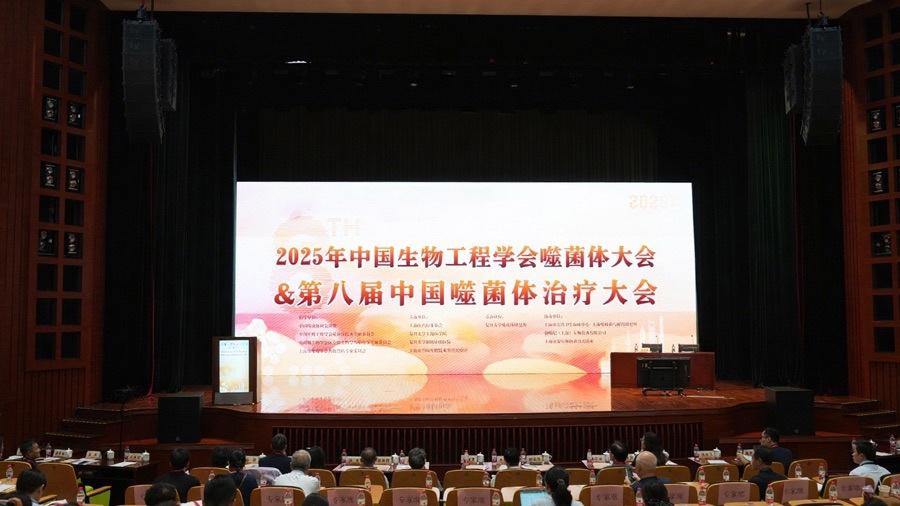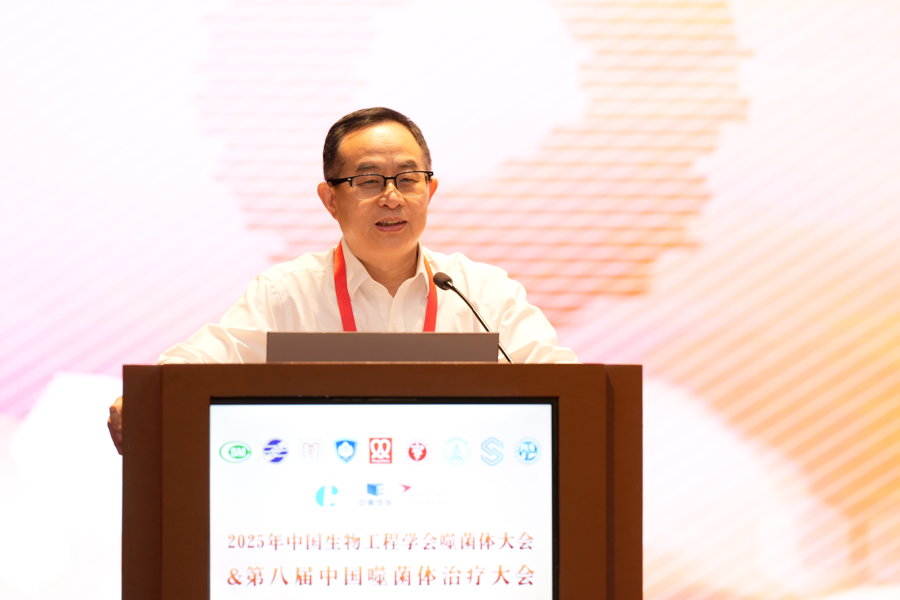The 2025 National Key R&D Program “Frontier Biotechnology” key project on bacteriophage was jointly launched.


Antibiotic resistance has become a major global challenge in clinical medicine. Statistics show that antibiotic-resistant infections contribute to 4 million deaths worldwide each year, with 1.3 million directly attributable to such resistance. How can we tackle this pressing issue? The Bacteriophage Conference of the Chinese Society of Biotechnology and the 8th China Bacteriophage Therapy Conference, held from the 19th to the 23rd at Zhongshan Hospital, Fudan University, brought promising news: phage therapy may offer a groundbreaking solution to antibiotic resistance.
Professor Zhu Tongyu, Vice Dean of Shanghai Medical College of Fudan University, shared a clinical case: a 56-year-old male, seven years post-kidney transplantation, had been repeatedly hospitalized over the past two years due to infections around the transplanted kidney and abdominal wall. Cultures from drainage of the perirenal area and abdominal wall abscess both revealed multidrug-resistant E. coli. Despite multiple rounds of antibiotic treatments, the bacteria persisted. The patient underwent three surgical excisions, yet the results were unsatisfactory.

In May of this year, the granuloma in the abdominal wall cavity had eroded through the skin, making surgical removal of the infection focus impossible. As hope seemed lost, Professor Zhu’s phage team (a joint team from the Fudan University Phage Research Institute and Chuangshiji (Shanghai) Biotechnology Co., Ltd.) identified a lytic phage through precise matching.
Phage therapy works like peeling an onion—gradually breaking down the infectious foci within the patient’s body. After several rounds of localized phage treatment, the patient’s wound healed, and the underlying infection focus significantly reduced. Currently, the patient is in stable condition, requiring no antibiotics, with normal body temperature and continuously improving infection markers.
What are bacteriophages? Professor Zhu explained: In the natural environment, “one thing subdues another.” Bacteriophages are viruses that invade bacteria and serve as genetic material that shapes the biological characteristics of host bacteria. They are among the most widespread and widely distributed viruses, found in sewage, soil, and even the gut of animals, where they outnumber bacteria. Although over 6,000 types of phages have been identified, their actual diversity far exceeds this number. Cases like the one mentioned above are not rare—over 300 patients have been successfully treated in Shanghai, with optimistic recovery outcomes.
As one of the most promising alternative antimicrobial therapies, phage therapy has attracted significant attention for its development and application. Notably, the European Union has approved phage therapy for clinical use. In China, basic research and clinical applications in this field are advancing simultaneously, with initial achievements in phage preparation development and personalized therapy. Shanghai, for example, has established an integrated chain coordinating research, clinical practice, production, and regulation. Clinically, various administration methods such as oral, intravenous, and perfusion are being explored. “Global phage research has entered a phase of accelerated breakthroughs, with technologies like AI screening expanding treatment boundaries,” said Zhu.
During the conference, the 2025 National Key R&D Program “Frontier Biotechnology” Bacteriophage Special Projects were launched, comprising two major initiatives:
- “Development of Safe and Efficient Engineered Bacteriophage Therapy Technologies and Clinical Research,” led by Zhongshan Hospital, Fudan University.
- “Research on Key Technologies for Developing Safe and Efficient Bacteriophage Preparations and Clinical Treatment of Drug-Resistant Bacterial Infections,” led by Beijing University of Chemical Technology.
These projects integrate efforts from government, industry, academia, and research sectors, marking China’s transition from laboratory exploration to systematic clinical validation in phage therapy. This collaboration will vigorously promote the industrialization and standardization of phage therapy domestically.
Concurrently, the second Bacteriophage Therapy “Seed Camp” was held, covering the entire workflow from fundamental phage theory, isolation and purification techniques, and quality testing methods to clinical application standards, regulatory policy analysis, and translational case studies. Through a combination of systematic training and practical implementation, the camp aims to cultivate emerging talent in the field and advance phage therapy from theoretical research to broader clinical applications.
Since its inception in 2018, the China Bacteriophage Therapy Conference has been successfully held seven times, attracting nearly a thousand experts from countries including China, Belgium, the United States, and Georgia, along with nearly ten thousand participants. It has become a benchmark academic platform in the field of basic and clinical phage research in China.
